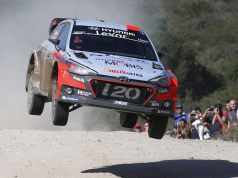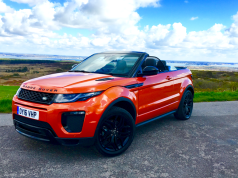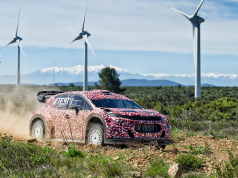The mantra ‘live for the moment’ is not one that can be applied easily to motorsport. Of course, as all racing drivers will tell you, winning is paramount. Savouring the sweet taste of bubbly on the top step of the podium is without doubt the proudest and most affirming moment in any racer’s career and the same can be said for the team behind the scenes.
However, considering the sheer pace of technological advance, modern motorsport of any denomination is by definition an unrelenting arms race. Ride this high-tech tidal wave well enough, and rewards flow in torrents. Stand still for even a moment however, and you risk being pulled under.
This little analogy is clearly one that Citroën racing found itself wresting with at the start of the 2016 WRC season. Formerly undisputed masters of their domain, the eight time world champions had been comprehensively eclipsed and relegated to also-rans by the Volkswagen WRC juggernaut since the latter’s bullish arrival on the rallying scene in 2013.
Rally Monte Carlo 2016 would be the first WRC round since 1998 to feature not a single Citroën factory entrant. But that’s far from the end of the story. With a sweeping revamp of the world’s premiere rallying series on the horizon for 2017, the French stable is pooling all of its resources into one simple objective; prepare a car capable of propelling Citroën back to summit in the brave new era of WRC.
Now, the multiple world champions have completed the first step on what they hope will be the road back to ultimate glory, as the prototype 2017 Citroën world rally car took to the roads for the first time in France.
Camouflaged in shape-masking red white and black livery, the new 2017 car took its first baby steps into the world earlier this month on a small test track at Citroën Racing’s Versailles headquarters. At the wheel for the very first shakedown session were chief test pilot Alexandre Bengué and Citroën WRC team leader Kris Meeke.
The machine in question is an entirely new beast developed to the tune of new, looser WRC regulations that clear the way for a new era of beefed-up rally cars. 25kg lighter and 55mm wider than before, the class of 2017 will above all enjoy greater aerodynamic freedom. Chunkier bumpers will be fitted with a splitter, larger air inlets and rear diffusers, evoking more than the odd sepia-tinted memory of group-B rally heroes of old.
In the engine room, the 2017-spec Citroën retains the same 1.6-litre direct injection turbo engine as carried by previous incarnations of the DS3 WRC. However, relaxed rules on power restriction have afforded Citroën engineers the considerable liberty of adding a 36mm booster package to the turbo. This new piece of kit is straight out of the Citroën C-Elysée world touring car’s box of tricks, hoisting the 2017 WRC challenger’s total power output to 380bhp.
Indeed, Citroën Racing’s brief but successful stint in the WTCC cars gives the company’s rallying arm several key advantages ahead of WRC 2017, a fact not lost on Team Principle Yves Matton.
“Before, we had virtually no real experience in aerodynamics. It is now a field in which we have genuine expertise. Similarly, we have an engine that has been running for more than two years with a similar power level and lifespan to those stipulated in the WRC specifications.” Branching out, it would seem, pays dividends.
After its first outing in Versailles, the testing team made tracks for the south of France, the home of some notoriously tough rallying country. The first in-the-field test for the new machine took place on roads regularly used by cross-country rally vehicles, the rocky gravel roads providing the first true examination of the 2017 car’s chassis, suspension, gearbox and bodywork. Here, Abu Dhabi WRT driver Craig Breen joined Meeke and the rest of the test crew, the Irishman being one of several candidates in the frame to partner the Briton in Citroën’s yet-to-be-confirmed 2017 driver line-up.
Back in Versailles, number crunching and analysis is already underway, as preparation ramps up ahead of the next phase of testing this summer.
If, by temporally stepping aside, Citroën Racing has taken the pragmatic approach to the 2016 WRC season, it is quite simply because it recognises that, in the rapidly evolving world of motorsport, living for the moment is key. Crucially, the French stable knows that its ‘moment’ isn’t now. 2017 on the other hand; now that could be a different story.





